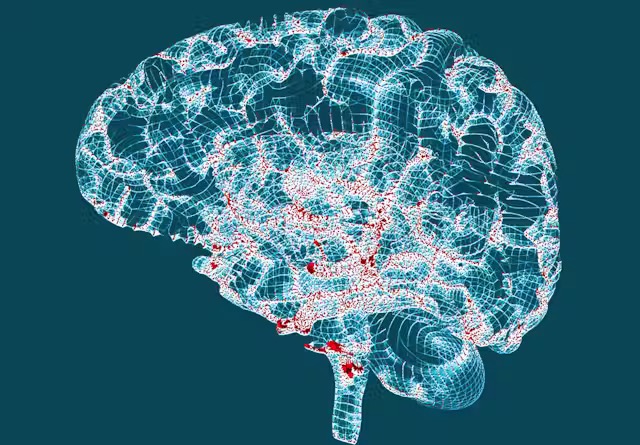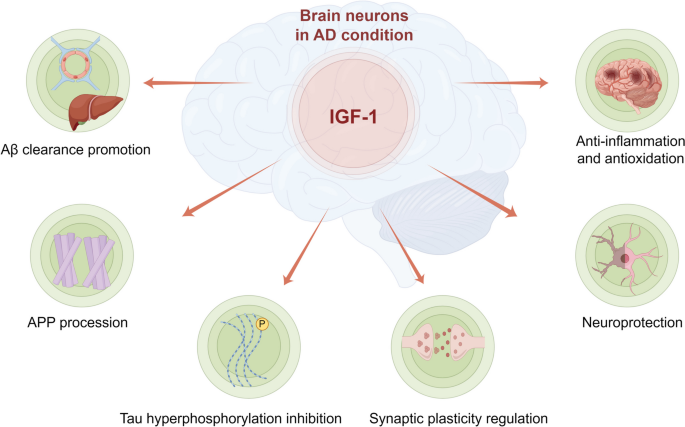Imagine this: You walk into a room, but suddenly, you forget why you’re there. You struggle to recall a familiar name or misplace your keys more often than usual. While occasional forgetfulness is normal, when memory loss starts to interfere with daily life, it could be a sign of something more serious: Alzheimer’s disease (AD).
Alzheimer’s is the most common cause of dementia, affecting millions of people worldwide. It slowly erodes memory, thinking skills, and even the ability to carry out simple tasks. Scientists have spent decades unraveling its causes, and one surprising factor keeps showing up insulin resistance in the brain.[1]
Alzheimer’s and the Brain: A Metabolic Disaster
We often associate insulin with diabetes, and it also plays a crucial role in brain function. Normally, insulin helps regulate glucose levels, providing energy to brain cells.
But in Alzheimer’s patients, the brain stops responding to insulin properly, leading to what some researchers call “Type 3 Diabetes”. [2] This insulin resistance makes it difficult for neurons to get the energy they need to function.
Therefore, neurons experience oxidative stress and inflammation, while harmful plaques like amyloid-β build up in the brain. Insulin resistance also contributes to tau protein tangles, which disrupt communication between brain cells, further impairing cognitive function.[3]
Insulin in the Brain: More Than Just Sugar Control
For years, people believed that insulin was only relevant to the body’s metabolism. But groundbreaking research has shown that insulin in the brain does so much more. It helps with:
- Memory formation – Insulin receptors are abundant in the hippocampus, the brain’s memory center.
- Neuroprotection – It shields brain cells from damage and prevents cognitive decline.
- Synaptic plasticity – Insulin supports the connections between neurons, keeping thinking sharp and learning intact.
But when insulin signaling is disrupted, all these functions begin to fail—setting the stage for Alzheimer’s disease.
Insulin Growth Factor (IGF): The Brain’s Unsung Hero
Insulin-like growth factors (IGFs) are proteins with a molecular structure similar to insulin. They bind to insulin receptors as well as IGF receptors. There are two subtypes, IGF-1 and IGF-2, which play crucial roles in metabolism, growth, and the proliferation of peripheral and central cells.
- Neuronal survival and repair – IGF-1 helps brain cells recover from damage.
- IGF-1 binds to its receptor (IGF-1R), activating the PI3K/Akt signaling pathway.
- Akt promotes neuron survival by inhibiting apoptosis (cell death) and stimulating neurogenesis and synaptic plasticity. [4]
- Clearing amyloid-β plaques – It prevents toxic proteins from accumulating in the brain.
- IGF-1 boosts microglial and astrocyte activity, enhancing their ability to clear amyloid-β through phagocytosis. [4]
- Regulating tau proteins – Keeping tau from forming deadly tangles inside neurons.
- IGF-1 activates Akt, which inhibits GSK-3β (Glycogen Synthase Kinase-3β), a key enzyme that phosphorylates tau.
- By reducing tau phosphorylation, IGF-1 prevents the formation of neurofibrillary tangles that disrupt neuron function. [4]
Figure 3. This figure demonstrates how decrease of IGF-1 levels contribute to AD.
In Alzheimer’s, IGF-1 levels decline, and the brain loses this protective mechanism. Without enough IGF-1, toxic proteins build up, neurons die, and the disease progresses faster. [5]
Can You Prevent Alzheimer’s? Here’s What Science Says
The good news? You CAN take steps to protect your brain. While there’s no guaranteed cure for Alzheimer’s, research strongly suggests that lifestyle changes can significantly lower your risk.
1. Healthy eating
Diets rich in healthy fats, lean proteins, and fiber can help reduce insulin resistance. The Mediterranean diet, full of fish, olive oil, nuts, and leafy greens, is linked to a lower risk of Alzheimer’s.
Figure 4. A Mediterranean diet with fish, olive oil, nuts, and greens reduces insulin resistance, supports weight management, and lowers Alzheimer’s risk.
2. Stay Physically Active
Exercise boosts insulin sensitivity, increases blood flow to the brain, and reduces inflammation. Aim for at least 30 minutes of movement a day—whether it’s walking, dancing, or yoga.
Figure 5. Walking, dancing, or yoga boosts insulin sensitivity, improves brain blood flow, and reduces inflammation.
3. Keep Your Blood Sugar in Check
High blood sugar contributes to insulin resistance and Alzheimer’s progression. Avoid processed sugars, refined carbs, and sugary drinks to keep your glucose levels stable. [4]
4. Engage Your Brain
Keeping your mind active is just as important as exercising your body! Try:
- Reading books
- Learning a new skill
- Solving puzzles
- Engaging in social activities
5. Sleep Like Your Brain Depends on It (Because It Does!)
During deep sleep, the brain clears out toxins, including amyloid-β plaques. Adults should aim for 7–9 hours of quality sleep per night.
Treatment Approaches:
While there’s no cure yet, scientists are exploring treatments targeting insulin resistance in the brain:
- Intranasal Insulin Therapy – Delivers insulin directly to the brain to enhance cognitive function.[6]
- Anti-Diabetic Drugs – Medications like Metformin and Pioglitazone show promise in reducing Alzheimer’s risk.
- IGF-1 Therapy – Boosting IGF-1 levels may help clear toxic proteins and protect neurons.
- GSK-3β Inhibitors – These drugs prevent tau tangles, slowing down neurodegeneration.
Footnotes
[1] Kumar, V., Kim, S. H., & Bishayee, K. (2022). Dysfunctional Glucose Metabolism in Alzheimer’s Disease Onset and Potential Pharmacological Interventions. International journal of molecular sciences, 23(17), 9540. https://doi.org/10.3390/ijms23179540
[2] de la Monte, S. M., & Wands, J. R. (2008). Alzheimer’s disease is type 3 diabetes-evidence reviewed. Journal of diabetes science and technology, 2(6), 1101–1113. https://doi.org/10.1177/193229680800200619
[3],[5] Sędzikowska, A., & Szablewski, L. (2021). Insulin and Insulin Resistance in Alzheimer’s Disease. International journal of molecular sciences, 22(18), 9987. https://doi.org/10.3390/ijms22189987
[4] Al-Samerria, S., & Radovick, S. (2021). The Role of Insulin-like Growth Factor-1 (IGF-1) in the Control of Neuroendocrine Regulation of Growth. Cells, 10(10), 2664. https://doi.org/10.3390/cells10102664
[6] Hallschmid M. (2021). Intranasal Insulin for Alzheimer’s Disease. CNS drugs, 35(1), 21–37. https://doi.org/10.1007/s40263-020-00781-x



